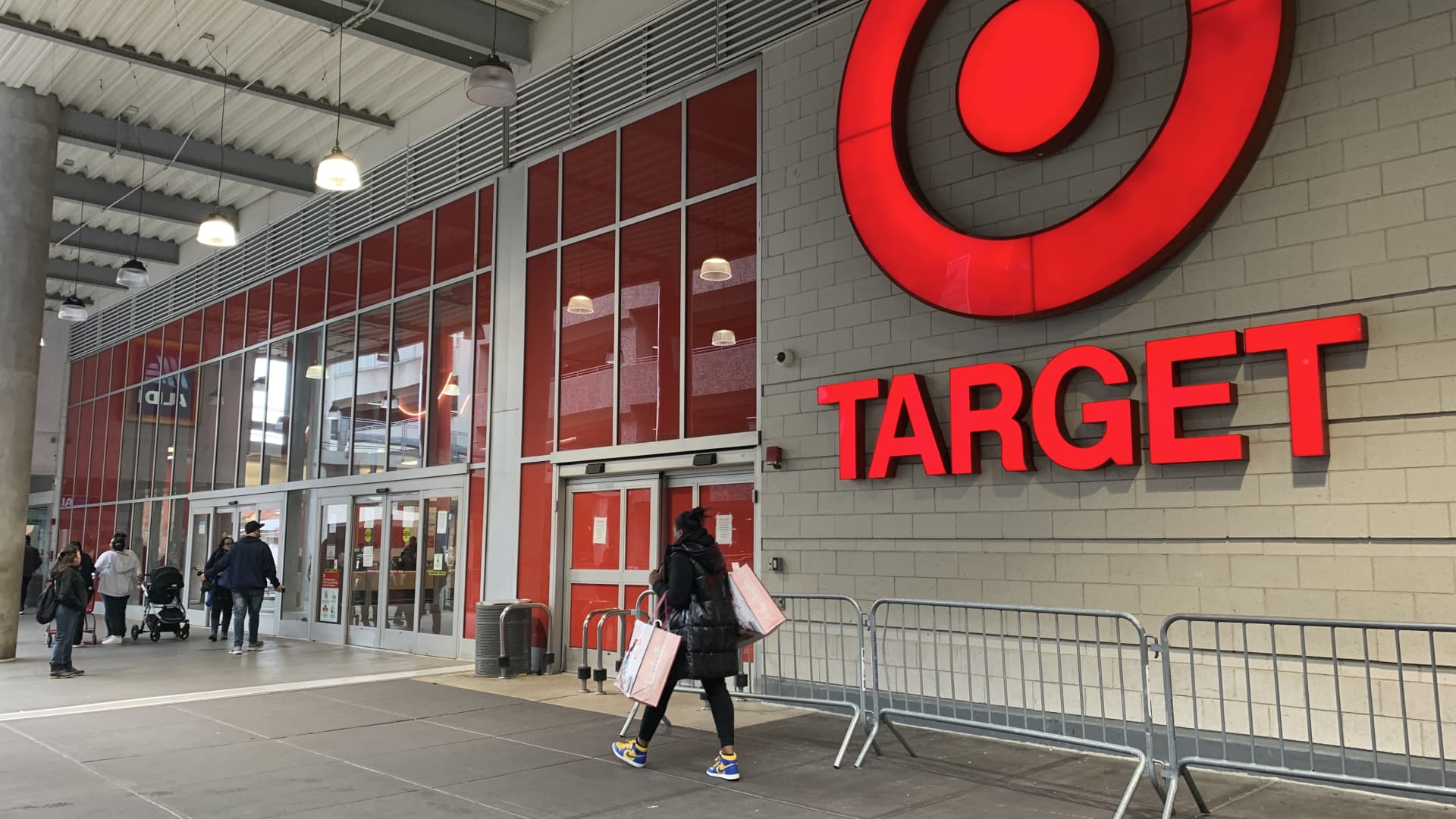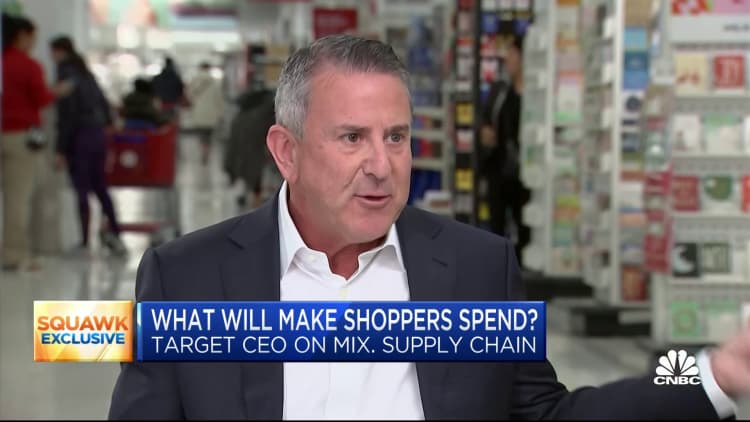
Target’s store in Harlem is one of nine locations that the retailer recently shuttered. It blamed the closures on high levels of theft and safety risks.
In the Harlem neighbourhood of New York City, Target‘s first store to open in Manhattan has permanently shut its doors. The retailer has closed eight other city stores around the country.
Target’s closures, which the company blamed on theft and violence at a time when sales have stagnated, marked the latest in a series of public setbacks for the big-box retailer— a jarring turnabout for a company seen as a major pandemic winner.
Yet as Target tries to pull itself out of a recent rut, Chief Operating Officer John Mulligan said the company sees “lots more opportunity to grow in New York,” including city neighbourhoods. He pointed to closures and openings in Target’s hometown of Minneapolis-St. Paul and in Chicago as evidence that shuttering stores does not mean the company has run out of room to grow.
“If you go back through time, this is something we’ve done over and over again,” he said. “And when we close a store in a market, it doesn’t mean we stop investing in that market.”
This week, Target for the first time since the surprise store closures will update investors on its sales trends and efforts to overcome a string of challenges. It will report fiscal third-quarter earnings on Wednesday and share with investors where it plans to go from here. The company, in many ways, embodies both the benefits retailers saw during the Covid pandemic spending boom and the unique challenges they have faced coming out of it.
Read more: Consumer spending fell in October, according to new CNBC/NRF Retail Monitor tracking card transactions
Like other retailers, Target is dealing with softer sales — a reflection that shoppers have less to buy after a stimulus-fueled shopping spree and have pinched pennies because of inflation. It has coped with other dynamics, too, including stocking too much of the wrong inventory, backlash over its Pride collection and losses from theft and organized retail crime.
Some other retailers, such as Nordstrom and Walmart, have also shut stores in major cities — though they have not specifically blamed theft. Those companies’ closed stores, in San Francisco and Chicago, respectively, may have also felt the impact of people moving to suburbs or spending half or more of their work weeks at home.
Target’s Mulligan said evaluating and closing stores is a routine part of operating a company. Some locations don’t work, he said, and Target believed the nine stores that it closed in the New York, Seattle, Portland and San Francisco areas weren’t safe anymore.
But Greg Melich, a retail analyst for Evercore ISI, said the shuttered locations represent a bigger challenge for Target: it has struggled to win shoppers and get back on a path to growth. Theft and safety concerns likely contributed to already underperforming stores, he said.
“They’ve got to get their customer back,” he said. “That’s the fundamental problem.”
A bumpy ride for Target
For more than a year, Target has endured rocky sales and stock performance.
Shares of the company had fallen about 27% this year as of Friday, trailing far behind the S&P 500‘s performance and trading for less than half of its peak value during the pandemic years.
Target cut its full-year forecast in August, after already warning investors it expected lower sales than a year ago. For the fiscal year, it expects comparable sales to decline by about mid-single digits and earnings per share to range from $7 to $8.

In a recent interview with CNBC’s Becky Quick, CEO Brian Cornell said Target has even noticed shoppers buying fewer groceries as they feel pinched by “really sticky inflation” on everyday items like baby formula and pet food.
As Target looks to the holiday season, he said the company will contend with consumers juggling the higher cost of carrying a credit card balance, a steeper mortgage rate for homeowners and an extra expense as student loan payments resume.
Cornell doesn’t expect that mentality to change anytime soon.
“That’s the caution we’re seeing right now as consumers think about the balance of the year and going into 2024,” he said. “How do they manage their budgets? And I think we’ll see them spending much more carefully.”
To drum up holiday sales, he said the company is “leaning into affordability” and offering fresh items that inspire them to open their wallets.
But Michael Baker, a retail analyst for D.A. Davidson, said he expects Target will have a rougher holiday season than its rivals and miss fiscal third-quarter revenue expectations.
Target’s problems come in part from the fact that its merchandise skews heavily toward discretionary items that customers often skip when the budget is tight. Walmart, for example, draws more than half of its annual sales from groceries.
But Target’s aggressive push to get rid of excess inventory last year may have led to an overcorrection, Baker said.
“When you’re in a period of drawing down inventory and being really conservative in your inventory, it’s harder for merchants to make bets and take risks,” he said.
Target’s store dilemma
Target could boost sales by opening new stores, too — a challenge as it tries to gauge where people will shop most in the post-pandemic world.
Target has opened 21 stores across the country since late January, including in new markets like the Outer Banks of North Carolina and Grass Valley, Calif., a small town about an hour northeast of Sacramento. More stores are on the way, including new ones in Oahu, Hawaii and Detroit.
At the same time, Target’s high-profile closures raised fresh questions about whether the company — and other major retailers — still want to be in city centers where rents are high and foot traffic, in some cases, is less predictable because of hybrid work.
Some pandemic trends and demographic shifts have led retailers out of major cities and traditional malls. Nordstrom shut its San Francisco flagship, citing changing market dynamics, but has opened more of its off-price banner, Nordstrom Rack, in suburban strip malls. Macy’s newest locations are outside of malls and in suburban strip centers, too.
Demand for retail real estate has flipped. Availability in suburban areas has grown tighter than urban areas for the past five quarters that began in July 2022, said Brandon Isner, head of retail research for the Americas for real estate firm CBRE.
Grocers, “the frontline heroes of the pandemic,” have become the hot neighbors that many retailers want, he said.
“If it’s a trying economic time, people might not go to the mall, but they’re gonna go to the grocery store still every single week,” he said.
Isner added that within cities, some retailers are moving from one area to another. Sometimes, they’re moving away from an area that has struggled with crime, and in other cases, they’re choosing to go to a neighborhood with more foot traffic, a newer space or a lower rent.
Mulligan said Target will continue to open stores both in the suburbs and in cities. For instance, he said, Target wants to have more stores in Charlotte, N.C. because of its population growth. It wants to have locations in New York City that capture business from tourists who returned in droves after the pandemic.
Some of Target’s stores in cities and near college campuses are smaller. Its fleet of locations also serve an important role for the company’s online business, since more than 90% of its online orders are picked and packed there rather than in faraway fulfillment centers.
Since closing the Harlem store, Target has opened a new location in New York City’s Union Square. It plans to open a new store in Central Harlem, about a mile and a half away from the location that it shuttered.
Mulligan said the store will be “significantly smaller” than the old location and closer in size to its other Manhattan stores. The company has not announced the opening date.
For some, the location that’s coming doesn’t lessen the disappointment of seeing their nearby location close. Some shoppers also questioned the logic of opening so close by, if theft is a problem, and said the smaller store may not carry the same groceries and essentials they need.
It’s a calculation Target has to make as it tries to close stores, but retain customers, at a time when shoppers are opening their wallets less often for items they don’t use every day.
Tyrone Davis went to the Target in Harlem for weekly shopping trips with his girlfriend, Julissa Patoja, a teacher. They appreciated its cheaper prices and larger selection of everyday items, such as cereal, shampoo and laundry detergent — along with discretionary items like pumpkin-themed decor for Pantoja’s pre-kindergarten classroom.
He said he’s not sure if the new Harlem store will have that same mix.
In the final days of the store, items like greeting cards, Halloween costumes and books lingered on shelves as the grocery aisles were wiped clean.
In the hours after it closed, customers including Davis and Patoja arrived to the store with empty carts and tote bags for purchases.
Shoppers were confused and frustrated. Some didn’t realize the store was closing at all. Others said without a local Target, they would turn to other retailers, or consider shopping online at Walmart or Amazon.
“It’s a shocking move to everyone,” Davis said. “It’s definitely a loss.”
[ad_2]





